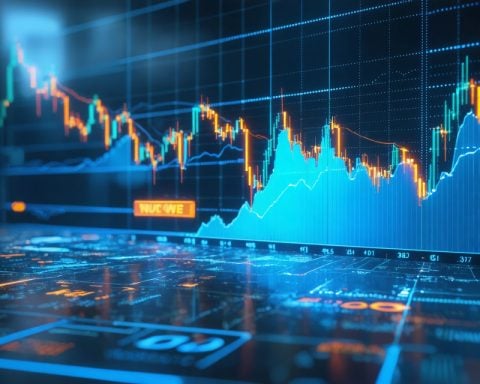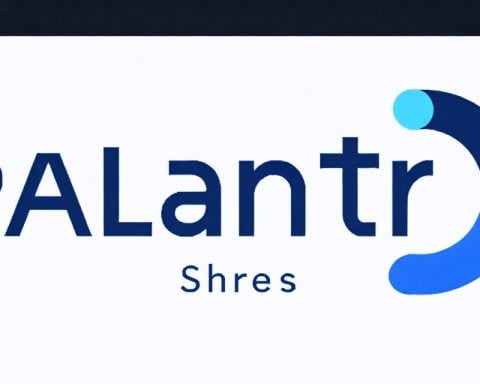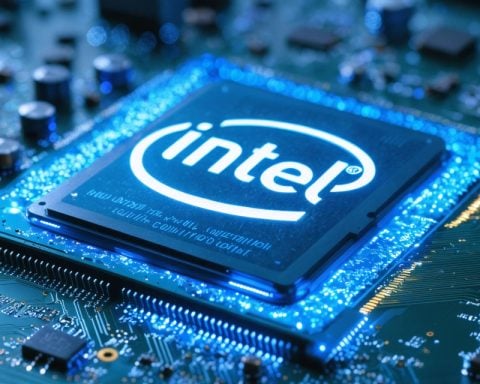- Chevron’s shares are currently undervalued at US$155, offering a 40% discount relative to their fair value of US$259.
- The Discounted Cash Flow (DCF) model reveals this potential undervaluation by projecting future financial gains.
- Chevron’s free cash flow is expected to rise significantly, with US$22.6 billion anticipated in 2025 alone.
- The calculated Terminal Value amounts to around US$596 billion, discounted to US$290 billion in present value.
- Total valuation from future cash flows and Terminal Value stands at approximately US$465 billion.
- Dividing the total worth by the number of outstanding shares highlights the undervaluation opportunity.
- Investors should note that the DCF model relies on assumptions that can greatly impact outcomes.
- Cautious yet daring investors may find opportunity in Chevron’s projected growth and strong financial outlook.
Chevron stands like a titan on Wall Street, yet beneath its towering presence lies an enticing secret for savvy investors. At US$155, its shares are significantly undervalued, offering a tantalizing 40% discount compared to its projected fair value of US$259. The method for unearthing this potential goldmine? The Discounted Cash Flow (DCF) model, a powerful tool that, while seemingly complex, simplifies the art of predicting future financial gains.
Consider this: over the next decade, Chevron’s free cash flow could reach staggering heights, with 2025 alone expected to deliver US$22.6 billion. Analysts foresee a steady trajectory, yet what truly captivates is the calculated Terminal Value—a future cash flow culmination—approximately US$596 billion. This enormous figure shrinks to US$290 billion when viewed through today’s lens, thanks to the art of discounting.
What’s fascinating is the sum of these discounted future cash flows, plus the Terminal Value, brings the total worth to around US$465 billion. Dividing this by the number of Chevron’s outstanding shares uncovers the stock’s enticing undervaluation. But remember, the DCF model isn’t flawless; it thrives on assumptions—discount rates and growth estimates—which can change the narrative significantly.
For those with an eye for opportunity, Chevron presents a compelling case. Despite past challenges, its projected growth and robust financial posture suggest a hidden potential waiting to be unlocked. Navigating this world of finance requires daring, but if you’re willing to dive deeper, you may just strike oil on Wall Street’s often-murky floors.
Discover Chevron’s Hidden Potential: Why Its Undervalued Stock is a Golden Opportunity
Unveiling Chevron’s Market Potential
Chevron’s status as a titan on Wall Street offers savvy investors an intriguing opportunity, with its shares currently undervalued by approximately 40% based on their projected fair value of US$259. This value was revealed through the use of the Discounted Cash Flow (DCF) model, highlighting Chevron’s hidden potential for financial gains. To understand this, we need to delve deeper into the mechanics of DCF, forecast market trends, evaluate real-world implications, and consider investment strategies.
How Chevron’s DCF Model Paints a Promising Picture
The DCF model is fundamental in evaluating Chevron’s growth potential:
1. Forecasting Free Cash Flow: Analysts predict Chevron’s free cash flow to peak significantly over the next decade, hitting about US$22.6 billion by 2025.
2. Terminal Value Calculation: The projected culmination of future cash flows (terminal value) stands at US$596 billion. Present-value discounting adjusts this figure to approximately US$290 billion.
3. Summing Values for Current Worth: After accumulating the discounted cash flows and terminal value, Chevron’s total worth is about US$465 billion.
4. Per Share Valuation: Dividing this worth by the number of outstanding shares confirms their undervaluation.
Real-World Use Cases and Industry Trends
Chevron’s market positioning and industry practices affect its valuation:
– Energy Sector Dynamics: Global energy demand, environmental policies, and emerging markets influence oil giants like Chevron.
– Technological Advancements: Investment in renewable energy and sustainable technologies impacts long-term growth.
– Regulatory and Environmental Considerations: Policies on carbon emissions and shifts towards cleaner energy redefine the energy landscape.
Insights and Predictions for Chevron Investors
Chevron presents both opportunities and challenges:
– Pros and Cons:
– Pros: Strong financial health, high cash flow predictability, and strategic positioning in the energy market.
– Cons: Reliance on oil prices, regulatory risks, and potential underperformance in transition to renewables.
– Future Outlook:
– Chevron may benefit from strategic diversification into alternative energy sources.
– A resurgence in global travel and manufacturing can drive oil demand, boosting Chevron’s profits.
Security and Sustainability
Chevron’s investment in sustainability is a crucial consideration:
– Security Measures: Robust cybersecurity protocols ensure protection against financial and operational risks.
– Sustainability Practices: Transitioning towards cleaner energy solutions, Chevron invests in technologies that reduce carbon footprint, comply with environmental standards, and sustain operational longevity.
Actionable Recommendations
For investors looking to tap into Chevron’s potential, consider these tips:
– Monitor Market Indicators: Keep abreast of changes in energy demand, oil prices, and regulatory shifts.
– Diversified Portfolio Strategy: Balance investments in traditional energy with emerging renewables to hedge risks.
– Leverage Investment Tools: Using comprehensive valuation models such as DCF can enhance investment decisions.
– Stay Informed: Regularly review Chevron’s financial reports and industry analyses to assess investment viability.
For more market insights and to explore investment opportunities, visit Chevron.
Whether you’re a seasoned investor or a newcomer, unlocking Chevron’s undervalued stock potential requires keen market awareness and strategic planning. Dive deeper into Chevron’s world, and you might just find the next golden opportunity hiding beneath Wall Street’s surface.


















